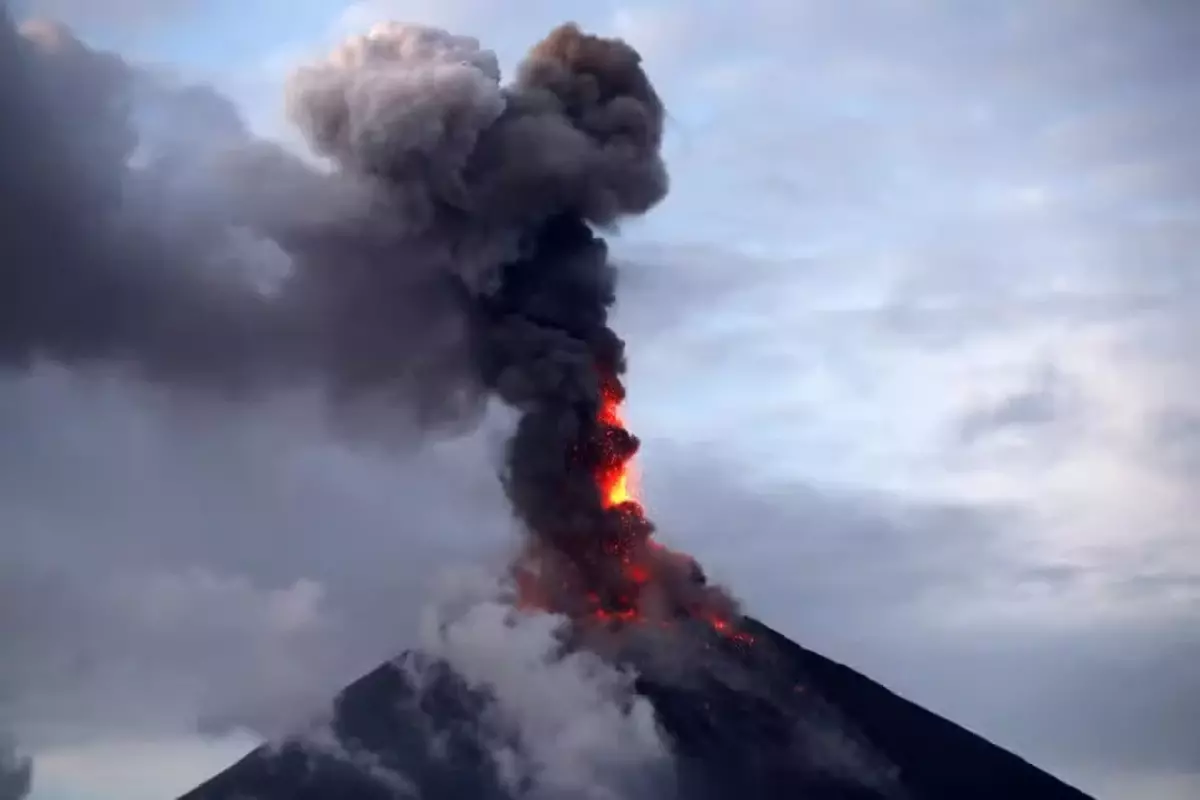
Mount Mayon
Scientists in the Philippines warned that a hazardous eruption of a volcano in the archipelago might occur within days or weeks, and they urged neighbouring residents to leave their homes.
Hundreds of people in central Albay province are anticipated to be relocated after the Philippine Institute of Volcanology and Seismology issued a warning.
Mayon, a nearly perfect cone located about 330 kilometres (205 miles) southeast of Manila, is one of the country’s 24 active volcanoes.
The seismology agency reported seeing three pyroclastic density currents (PDCs), or rapidly-moving avalanches of volcanic ash, rock and gases on Mayon’s slopes on Thursday.
The agency raised the alert level from two to three on a scale of zero to five, citing “increased chances of lava flow and hazardous PDCs… and of potential explosive activity within weeks or even days”.
The officer-in-charge of Albay provincial disaster management agency, Eugene Escobar said, “All necessary preparations are being done”.
An officer for the agency, Rommel Negrete stated that residents of Anoling village on the volcano’s slopes would be evacuated.
In the meantime, this week, the Taal volcano, which is about 50 kilometres (31 miles) south of Manila, has been spewing sulphur dioxide, covering the areas in smog and prompting advisories for people to stay indoors.
The seismology agency reported on Thursday that steam-rich plumes have been seen rising two kilometres (1.2 miles) into the sky. The alert level is still at one.
Because of its location on the Pacific ‘Ring of Fire’, where tectonic plates meet deep below the Earth’s surface, earthquakes and volcanic activity are widespread in the Philippines.
Mayon evicted tens of thousands of people five years ago after spewing millions of tonnes of ash, rocks, and lava.
The 1991 eruption of Mount Pinatubo, roughly 100 kilometres (62 miles) northwest of Manila, was the most violent explosion in recent decades, killing over 800 people.
It emitted an ash cloud that spread thousands of kilometres in a couple of days, damaging over two dozen aircraft.
Also read: Volodymyr Zelensky Shocked By United Nations Inaction On Dam Collapse
To read more such news, download Bharat Express news apps


















